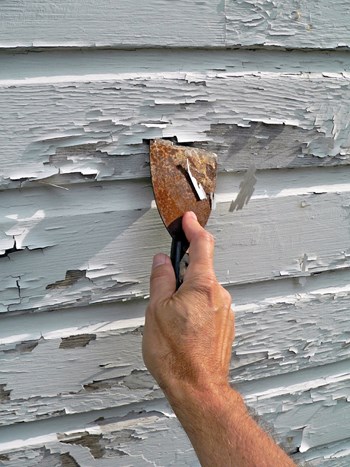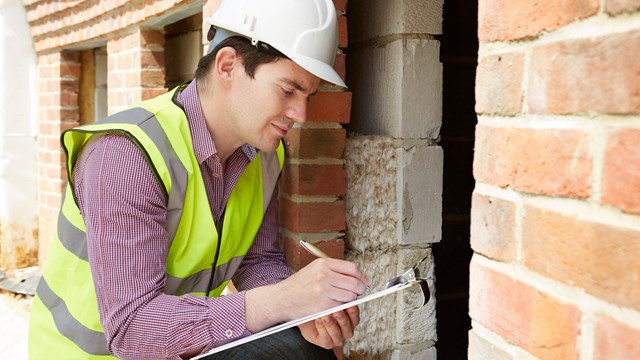
If something’s broken, you fix it. If it's worn out, you replace it. It sounds like a simple equation, but when it comes to construction in cash-strapped times, it can be a case of easier said than done.
As many condominiums’ fiscal situation remains unsure, some are looking at putting off scheduled maintenance projects until the economy improves. They are seeking to hold off that siding, roofing, decking, or paving project a year or so, when the condo will, hopefully, have some more money.
Deferred maintenance, as it is known in real estate, is not a strategy new to this recession. But, since by definition it means not fixing something that needs it, it is one that needs to be employed carefully, so that condos don’t find themselves dealing with litigation, declining property values, or health issues such as mold.
Also, some projects become exponentially more expensive if not handled in a timely fashion. That’s why it is vital that boards and associations get an expert opinion (which cannot be defined as a brother-in-law of a board member) on which projects can safely be postponed, and which need to be dealt with immediately – no matter how many zeroes are attached to the price tag.
This article will lay out some of the risks involved with deferred maintenance, as well as ways condominium associations can stretch their reserve fund dollars.
Set Priorities
“The thought process isn’t that different than any kind of maintenance program – it’s what goes on in people’s heads all the time: What’s the highest priority?” says Alan Mooney, presidentof Criterium Engineers in Portland, Maine, which has offices in 35 states. “It’s not new and different. It’s just something you’ve got to think about. What things have the most consequence? If I don't do this this year, how much worse is it going to be next year? Is it going to lead to other underlying problems?”
All of the experts interviewed for this article agreed that there are two areas that absolutely should not be deferred: Any instance where water intrusion is a factor and any place where safety is involved.
Water can lead to wood rot and mold and much larger construction projects than may appear on the surface. “Some groups are kidding themselves saying, ‘We're merely putting up with a bad-looking building,’ ” says Ralph Noblin, PE, president of Noblin and Associates LC, in Bridgewater, Massachusetts. If water gets inside, he says, “You can go from a siding project to a reconstruct-the-building project.”
That is why, he and others say, it’s important to have a reserve study done – and updated every three to five years – to keep an eye on the integrity of the building envelope and make sure enough monthly condo fees are coming in to cover likely repairs. “It’s really important to have a decent reserve fund study done by an independent third party and work from that. At least you know your starting point and can plan from there,” says Mooney. In fact, many states, such as Maine, requiresuch a study, Mooney adds. “This is not an arbitrary exercise; this is not subjective. There are legal obligations that have to be considered.”
Safety issues can cover everything from sidewalks that are a tripping hazard to worn-out stair railings to tree limbs that could land on either a person or a car. And then there are decks. “Decks are scary,” says Noblin, who says that they get his vote for the one item he wishes no one would ever defer. “I have nightmares about decks.”
Delaying Wallpapering OK
Where condos can afford to wait a year or two is on items that don’t directly impact people’s living space, such as carpeting or wallpaper in the common areas or clubhouse, exterior painting (although this can’t be put off more than a year or two without affecting the integrity of the wood), and repaving parking lots and driveways.
These items tend to be less expensive than those that should not be put off, experts note, and there is a downside. “Those types of things usually leave a first impression with homebuyers,” says Matthew Ksionzyk, New England directorof operations for Reserve Advisors, based in Hartford, Connecticut.
If a condominium is past its twentieth birthday, several major capital projects could be stacking up at once. The roofs, siding, decks, and pavement all are near the end of their useful lives, and the heating system may have aging components. While the association may have been faithfully collecting fees over the years, the reserve fund may not be able to handle all of those repairs at once. Noblin once did a reserve study for a Connecticut condominium that had $350,000 in its reserve fund. The estimated costs of repairs: $6 million.
One condominium complex in Worcester found itself in such a situation, with an estimate of about $300,000 worth of roofing and $75,000 worth of new pavement needed. Its largely working-class owners couldn’t just write out a check for several thousand dollars apiece. So, the condodecided to just patch and seal the cracks in the pavement for now, and to stagger replacing the roofs over the next three years. The owners will only face a special assessment in the year when their building gets a new roof.
The trade-off is that the pavement will likely cost more money once it’s finally replaced, says Bruce Hutchinson, a senior associate with CAS Financial Advisory Services’ subsidiary, On-Site Insight in Boston, a capital planning advisory service for multifamily properties. “It’s buying you time on the frontend, but it may ultimately cost you more than if you were able to address it fully right now,” he says. But those kinds of choices might make it more feasible to address the highest-priority items right now.
Consider a Loan
Condo boards also might want to consider taking out a loan, rather than deferring maintenance any further. The biggest reason not to wait, says Erin Alicata, assistant vice president of Community Association Banc in Goshen, Connecticut, is that interest rates are going to be going up. “In 2011, money is going to be a lot more expensive,” she says. While condo associations may be afraid that owners won’t want to buy into a place that has a loan, she suggests that they would be far more unlikely to want to live somewhere with leaky roofs and lousy siding. Alicata says that, compared with last summer, her loan office is extremely busy. “People are realizing that if they don’t do it now, they’re going to be in a world of hurt.”
Regular maintenance and repairs also can make deferring things for a year or two a more realistic possibility, says Ksionzyk. If a heating system has been regularly serviced, it’s possible to get 25 or 30 years out of it, rather than 20, for example. If you have a flat roof, regular maintenance can buy you another five years – or 25 percent of the expected useful life. (There's not much you can do to extend the life of a sloped roof, and, as Noblin puts it, “Deferred maintenance for the roof is crazy.”) Wrought-iron fences that have been regularly painted could last three times as long as those that are left to rust. “Today’s $500 issue is tomorrow’s $5,000 issue,” agrees Hutchinson.
But there comes a time when, no matter how many times you’ve patchedit, the roof simply must be replaced. And for many condos, that time may be approaching fast. “What we’re talking about right now is deferred maintenance squared. Most of these properties have been deferring maintenance forever,” says Noblin.
“These kinds of economic times are bringing to the surface people who have been irresponsible in managing their properties,” says Mooney. “The people who have been doing what they’re supposed to – those folks could almost care less about the economic times – because they’ve got the money saved.”
Yvonne Zipp is a freelance writer and a frequent contributor to New England Condominium magazine.






Comments
Leave a Comment